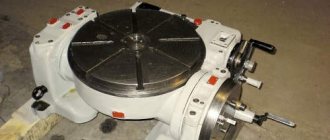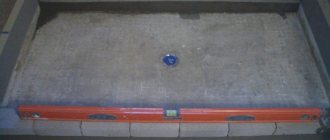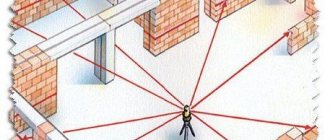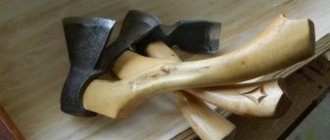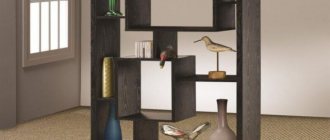Advantages of using clamps
Unlike traditional vices, clamps have a more optimal shape and adjustable clamps. The advantages of choosing include:
- The ability to free the master's hands while processing parts.
- Convenient fastening.
- Adjustable clamping force of the part.
- A wide range of instructions on how to make clamps with your own hands.
Among the practical advantages, there is also a large assortment of models that differ in size, shape, and design. For the convenience of craftsmen to create high-quality tools, there are pictures, diagrams, sketches of clamps of various variations.
DIY crafts, step-by-step instructions, photos and videos
The clamp is a very popular tool. There can never be too many clamps in a home workshop. This tool is well known to joiners and carpenters who use it constantly. Today we will show you how to make a metal clamp with your own hands.
Many people make such hand tools with their own hands. Masters do this because it is customary to make them for yourself and your needs. And purchased tools, especially hand-held ones, very often do not meet the needs for different jobs. So you have to make such things with your own hands.
So, to make a homemade clamp we will need:
- Profile pipe 20x20 mm, length - about 1 m;
- Several scraps of sheet steel, thickness - 1-1.5 mm;
- Waste calibrated boards, 20 mm thick;
- Roofing screws 18-20 mm;
- Four screws with self-clamping nuts, size 3x35-45 mm;
- Unnecessary clamping screw with handle;
- Furniture mortise ties, 2 pcs per clamp;
- Spray paint (optional).
Advice! You can buy a clamp screw for a clamp at a flea market or a power tool service. Or you can make it yourself from a threaded tie and a piece of metal welded to the end or a glued knob, for example, made of wood or plastic.
The following tool will be useful:
- Drill, screwdriver or drilling machine;
- Grinder or angle grinder;
- Marking tool;
- Nozzles for self-tapping screws;
- Set of wood drills;
- A jigsaw or a good hacksaw;
Advice! It is convenient to clean metal from rust deposits for painting or to refresh it using a grinding attachment with replaceable discs. These are available for sale under a drill chuck or for installation on an angle grinder.
Instructions for making a clamp for a home workshop with your own hands
We cut out a small rectangle from a calibrated board for the movable stopper of the clamp. It’s not at all difficult to do this with a jigsaw and very quickly.
Application areas of the tool
Clamps can be used in the following situations:
- For tight contact of two parts. The tool screw presses the workpiece tightly against the adjacent surface.
- For reliable fastening of parts, panels, materials to the surface of the desktop.
- DIY metal clamps are used to hold small objects or wires where a classic vice cannot cope with the task.
Sometimes in garages craftsmen fix table lamps to worktops using clamps.
DIY plywood clamp
Hello to all lovers of homemade products and those who accidentally got here. Once I needed to glue plywood at home, but there was no weight at hand to fix it all for a couple of hours for gluing. Without thinking twice, I decided that a clamp would help me cope with this task. But bad luck, it’s not there either. This is what prompted me to make a clamp with my own hands, which will help save time, money and gain experience with carpentry inventions, which will never be superfluous.
In order to make a homemade plywood clamp, you will need:
* Sheet of plywood * Bolt 120 mm long with nut * PVA glue * 6 self-tapping screws with a press washer * Electric drill or screwdriver * Electric jigsaw * Angle grinder or in common parlance “grinder” * Grinding emery disc * Drill 3mm and 6mm * Paint can * Wooden block * Construction square * Wood saw
That's all that will help you make a clamp with your own hands, I think it won't be difficult for anyone to find all the components.
[media=https://www.youtube.com/watch?v=Ubf5W1U-CYI]
Step one.
The first thing you need to do is find a sheet of plywood, the thickness of which will be 8 mm; I do not recommend using thinner plywood, since it will not be rigid enough and it may simply break.
We place the plywood on the workbench and mark the dimensions of the future clamp, or rather half of it, since it will consist of two parts cut from plywood.
The height of the future clamp is 130 mm and the width is 100 mm; it is also worth paying attention to the thickness of the jaws, both upper and lower. The lower jaw has a thickness of 30 mm, since a nut will then be mounted into it and there will be a large load, and the upper jaw is 20 mm thick, which will be quite enough.
After the two parts cut according to the template are ready, we proceed to their processing. But before that, they need to be fastened with self-tapping screws, which will allow you to make two completely identical parts. Before tightening the screws, you need to drill holes with a 3 mm drill, otherwise the plywood may split, which we do not need at all.
Now we move on to sanding the parts. I don’t recommend this method of grinding with a grinder, since it is completely unsafe. If you have a grinding machine or a special machine for these things, then of course it would be wiser to process these two parts on them rather than using an angle grinder.
Step three.
Having finished grinding, we move on to the moving part of the clamp, in this case it is a bolt with a nut. To be able to clamp larger parts, I decided to use a 120 mm long bolt. Unscrew the screws and use a hacksaw to make a small cut.
This is done so that when drilling a hole it is strictly in the center and without distortions, at least this should be the case in theory. After the notches are made, you can twist and drill a hole for the bolt.
Next you need to make a groove for the nut with the same hacksaw.
Step four.
Now we assemble all the parts into a single whole, coat two adjacent surfaces with PVA glue, spread it evenly and, not forgetting to install the bolt and nut, screw the screws into place.
Step five.
The homemade product can be considered ready, but only in terms of the fact that it can now perform the functions inherent in it, that is, clamp parts. But what about the aesthetic component? That’s what we’ll do now. I have a little red paint left in the can, so we wrap the bolt threads with electrical tape and paint our finished device.
We wait until the paint dries and then test the clamp. As tests have shown, the homemade product fully met all my expectations; gluing plywood using this homemade product is convenient and quick.
That's all for me, I wish you all creative success and thank you for your attention.
Become the author of the site, publish your own articles, descriptions of homemade products and pay for the text. Read more here.
Operating principle of the design
Any clamp has a simple operating principle. The design of the mechanism allows you to fasten and hold in one position parts, adjacent surfaces, metal and wood workpieces.
Using a wide platform, the workpiece is attached to a tabletop or other surface. Using a screw, the part is firmly fixed between the stationary and movable lips.
Device of the simplest design
There are quite a lot of varieties of this tool, depending on a number of criteria (shape, size, material, operating principle of the device). However, all models have a standard structure:
- Frame in the shape of the letter P.
- One permanent fixing part.
Note!
DIY induction heater ♨️ - reviews of the best manufacturing options. Varieties of homemade device designs + step-by-step master class (160 photos)
Do-it-yourself Gauss cannon: TOP-130 photos of the best ways to create it yourself. Design features + master class for beginners
Do-it-yourself electric scooter - a master class with step-by-step instructions for doing it yourself. Tips and simple patterns for beginners + the best photo reviews
The design is complemented by a movable element for firmly fixing objects (namely, a screw). Clamp drawings allow you to familiarize yourself with the design features.
For convenience, almost all versions of the stationary element are presented in the form of a wide base, which allows you to clamp surfaces with maximum grip. The clamp can be made with your own hands from metal or a combined material.
Main types
At home, you can make a simple hand-held device for carpentry.
The design of the tool will include the main parts:
- frame;
- clamping couplings;
- moving part;
- screws or levers.
Homemade metal clamp
The clamp prevents the clamped workpiece from moving; for this, the compression level is adjusted. Based on the form of capture of processed materials, the installations are named:
- corner;
- installation;
- screw;
- manual;
- quick-clamping.
For practicality, the tool is made with maximum extension and smooth working stroke. Depending on the fastening method, the clamp can be:
- G-shaped - the most popular among craftsmen due to its ease of design and operation. The metal bracket has a stop pad on one side and an adjusting screw screwed into the thread on the other. There is a working sponge inside and a handle is welded on top. The mechanism is convenient for processing heavy, large, but simple-shaped workpieces.
- F-shaped, universal with a supporting surface attached to a long rod and a block with a coupling sliding along it. The clamp is secured with an auxiliary screw.
- Pipe for fastening large parts. The grip level is adjusted along the length of the rod on the support platform with sliding jaws. Pipe clamps allow you to work with bulky objects.
- Corner elements connect. To create a right angle when joining, there is an installation of 2 supporting and working surfaces. These can be 2 perpendicular screws or a corner block is installed on one. Sometimes devices are created to position parts at different angles.
- Tape with a clamp made of durable synthetic material with a tension block. Adjust the corners with additional plastic fixtures. This device is used for processing workpieces rounded with a large diameter, when it is necessary to fix polygonal joints.
A do-it-yourself clamp can be made from wood and metal raw materials. The following devices are more suitable for a home workshop:
- screw;
- quick-clamping;
- pipe
Often you have to process workpieces using an angle or tong model.
These types do not require complex material characteristics and simple manufacturing procedures.
Homemade Clamp
Basic tool options
Based on the assessment of the design features, the following models of clamps are distinguished:
- Beam models.
- Quick clamps.
- Screw terminals.
- Pipe options.
- End (T-shaped) models (clamps for panels).
- G-shaped types of clamps.
- F-shaped types of instrumentation.
All presented models differ in application, device type and application. This classification is far from the only one, but it describes many technical parameters for the design.
Repair and modification
As you can see, the design and principle of operation of a quick-release clamp is outrageously simple. And simplicity in the world of tools means reliability in most cases. But nevertheless, both cheap and expensive branded clamps with such a mechanism very quickly lose clamping force with intensive use.
Having examined the device from the inside, we can draw the first conclusions as to why the clamp does not hold:
- The retaining plate spring has weakened.
- The plate itself was bent.
- The hole in the plate has increased.
That's all the reasons. They are treated, accordingly, very simply. The spring can be straightened or replaced with a similar one. Straighten the plate if it is bent. If the hole has become larger, we make the same part from scrap materials.
However, as practice shows, these are all temporary measures. Due to the design features of this type of clamp, sooner or later they still refuse to hold the load. Those that are more expensive last longer. This Chinese sample blew away after 7-10 uses in a fairly gentle mode.
But, as promised, there is! There is one trick with which you can not only increase the clamping force of the clamp three times, but also extend its service life without repairing or replacing carriage parts. This method is shown in the photo below.
The trick is that when the lever is fixed in the most recessed position, the lifting plates also cling to the guide bar and work like a locking plate at the top. And since in this mode the carriage is held by three plates at once, the clamping power also increases three times.
In a good way, for these purposes it would be nice to provide some standard clamps on the levers. It is quite possible that professional models have them. But in this case, the lever is calmly held by two rubber bands for money, wound around it in three times. It is more convenient for these purposes to use a piece of tube of suitable diameter, a metal ring, and so on. The force required at the end of the lever is small, so many available tools can handle it.
Beam Tools
Unlike the traditional model, this device has a completely different body from the classics. It is presented in the form of beams, hence the name of the instrument.
The workpiece is fixed on surfaces located in a parallel or inclined plane. One bar is stationary, the second is movable with an adjustable screw on the side.
Note!
DIY rocking chair: TOP-120 photos of the best manufacturing options. Master class on creating a rocking chair at home
- Smokehouse from a gas cylinder - the best master class on making a homemade smokehouse with step-by-step photo diagrams for beginners
Do-it-yourself compressor: TOP-130 photo reviews of finished compressors. Step-by-step instructions + diagrams and drawings
Quick-release models
In practice, craftsmen may come across a second name - automatic clamps, which fully justify their name.
The body is a metal rod on which two plastic “lips” are mounted. Both lips are equipped with wide areas for maximum surface grip.
By analogy with previous and subsequent models, this option is characterized by the presence of a stationary element and a movable screw. For the convenience of craftsmen, the movable lip is equipped with a very practical handle with a control valve.
Another option
To make such a wooden clamp, standard sizes of 50 and 75 mm are used. After processing it goes to 44 by 79 mm. The length depends on the size of the clamp. In this case, it is approximately 150 cm. The maximum length is 100 cm. Required materials:
- plywood - 2 sheets each with parameters 70 by 175 mm, 25 by 175 mm, 90 by 175 mm 69 X;
- screws - 38 pieces in size 4 by 30;
- threaded rod 30 cm long, grade M 10.5;
- nuts - 5 pcs. M10;
- latch - 1 pc. M10.
The work will require the appropriate tools. It includes:
- electric saw;
- wrench;
- drill;
- screwdriver;
- hacksaw
It is better to make a lot of clamps at once, thanks to this you will be able to save an additional amount, especially if you plan to assemble the same type of options. When using a miter saw, cut the lumber into one sheet of 9 cm, 2 pieces of 2.5 cm and 3 fragments of 7 cm. The rest acts as a rod. Using a jigsaw or table saw, you can cut the plywood into two pieces. They should have dimensions of 70 by 175 mm. And you will also need 2 fragments with indicators:
- 25 by 175 mm;
- 69 X 44 by 2.
Using a hacksaw, cut the threaded rod to 30 cm. First, you need to make an additional cut into a block measuring 9 by 7 cm, if we are talking about unfixed ends. Once all the corners are cut, you need to drill a hole and insert the tightening bolts.
You need to make sure the holes are large enough to fit the bolt head. The threaded rod is fixed in the upper area of the fixed end. The hole needs to be large enough to fit the nut into the rod. Install the fixed end when intending to drill holes. When assembling, you need to make sure that the ends are secured at right angles. Thanks to this, the threaded rod will become parallel to the rod.
Before assembly, it is necessary to make a hole where the nut and threaded rod pass through. Do this in the same block position as for the fixed end. You need to make sure the hole is wide and deep enough to accommodate the nuts. The lower area is small, and therefore it is difficult to insert enough screws here. This is necessary to prevent curling.
The problem is solved using wood glue. Alternatively, you can round the corners in the lower area so that they do not catch the bar when clamped. The assembly can be considered almost complete. At the last stage you need to make a handle. It is used to move along a threaded rod. A slightly smaller hole is drilled in the central part than the threaded rod. So he manages to hold on only due to friction. Then fix the nut to the end of the threaded rod.
This can be done by welding. Alternative options include nailing or gluing. Despite the insufficient level of strength of a wooden clamp, compared to metal modifications, it provides a good level of clamping force.
Screw terminals
Very popular models that have another name - beam clamps. They have a frame arc in the shape of the letter U, as well as a movable screw with a massive platform (the so-called “patch”).
All available types of tools are made of durable alloys, meet safety requirements and have the longest possible service life.
Note!
Do-it-yourself wind generator: TOP-170 photo reviews of finished devices. Detailed DIY instructions for beginners
- Do-it-yourself spot welding - the best master class on making homemade spot welding with step-by-step photo diagrams of do-it-yourself work
Do-it-yourself tennis table: TOP-150 photos of the best manufacturing ideas. Master class on creating a tennis table at home
End models
The frame is C-shaped and equipped with three clamping screws. With their support pads, the screws are located parallel to each other, which allows you to optimally fix furniture parts and hold surfaces when gluing.
There is a significant drawback in practical work: the need to hold the frame and linings while tightening the screw bolts. The length of the guide contour is about 100 centimeters, which allows you to effectively move the fixing jaws.
G-shaped models
Forged products are made of durable steel, which is characterized by sufficient strength and good fixing properties. The production technology provides for the presence of a fine thread pitch and excellent pressing of adjacent surfaces to each other.
A very useful detail when working with welding. It is practically not used for fastening metal parts, but is well suited for holding wooden panels.
F-shaped clamp options
Less reliable options for tools that differ in their original form. It is inferior in strength to previous models, but is used in a wide range of areas. The technology provides for the presence of a metal frame, one fixed lip and another movable bar.
Thanks to the convenient F-shape, it is possible to use a structure of this type to hold small parts of non-standard sizes.
Clamps for furniture processing
A separately considered option are furniture tools. All models must meet a number of requirements:
- Do not damage furniture surfaces when fixing.
- Reliability of fastening.
In addition, such devices must have convenient shapes (furniture parts do not always correspond to traditional dimensions and shapes). Regardless of the material of manufacture (and most often metal and wood play this role), work surfaces are covered with additional strips to protect furniture from damage.
The following types of furniture clamps are distinguished:
- Screw model. Presented in the form of a T-shaped handle and a classic screw. Most often used for repair work on plumbing and communication pipes.
- Mounting clamps. For such options, the scope of application is the installation of communications and fixing them at the proper level.
- Angle clamp. It has a convenient shape and is used for gluing frames and wooden corners.
In practice, combined models with hydraulics, triggers, and vacuum are used. These are G-shaped and F-shaped types of clamps, which are used for fixing complex objects, silicone parts (with a sensitive surface to mechanical stress).
SELECTION OF HOMEMADE CLAMPS FOR WELDING POST. PART 1
Knowledge Bank Published by: Anton Churakov
# DIY clamp
In order to equip a welding station with professional tools, you will have to shell out a lot of money. If, for example, you are limited in finances, you do not require the functionality and accuracy of a professional tool, or you just like to do everything yourself, then you can make such a tool yourself. I bring to your attention a selection of homemade clamps for welding that seemed the most interesting to me. Some of them are not inferior in functionality to professional ones.
Clamps for butt joints of sheet steel.
To produce a very functional set of 12 pieces, the author spent 6 hours of time, 2 square decimeters of thin sheet steel, an electrode, and a piece of VGP pipe:
Below is a video with a similar clamp and a visual demonstration of how it works. This clamp sets a gap of 0.4 mm. To make it you need: a brake pad adjusting shim, a 22x1.25 mm square pipe, an M6 stud, a 6 mm square rod, an M6 wing nut.
Angle clamps (vise).
Angle clamp that clamps profile rolled products of different sizes. Made without the use of a lathe from scrap materials.
Homemade high-precision angle vise. There are turning works. The video description contains links to drawings.
Homemade corner clamp for welding for $2.5. Required: 50 cm of 35 mm corner, 1 m of strip 3 cm wide, screws, nuts:
C-shaped clamps.
A quick-release clamp made from an old hacksaw blade and car parts. I think it could be made from a broken tube gun.
Mini stainless steel clamp
Magnetic clamps.
Magnetic corner for welding from scrap materials (iron sheet, board, self-tapping screws) and small round neodymium magnets for self-tapping screws:
Magnetic welding square for $1. For manufacturing, you need a connecting plate, M5 connecting nuts, M5 countersunk screws, and a magnet from a damaged speaker.
F-clamps
A massive clamp made of metal strips, a connecting nut, a stud, a round bar, and a washer. Pay attention to the bevels of the moving part. They are the ones who provide the clamping.
Budget F-shaped clamp for welding from a 5 mm thick strip, connecting nut and stud:
If you have homemade clamps, then you can share an interesting design with community members in the VKontakte group or send it to us by email - we will publish it.
When using this material, link to the resource
WELDERS
required.
Making your own clamp
You can make high-quality clamps with your own hands using a number of available materials. Tools today are quite expensive, which determines the popularity of independent work. To create a clamp at home you will need the following set of tools:
- Crafting table.
- Classic vice.
- Hammers.
- Taps for cutting screw threads.
You will also need sandpaper. For the manufacture of clamps, as a rule, the simplest model is chosen. This is a traditional version in the form of a curved arc with a screw.
Instructions on how to make a clamp with your own hands:
- A hole is drilled at one end of the strip made of steel. The thread is also cut according to the M8 mark.
- A nut with a similar thread is welded to the same point.
- The metal tape is bent in the shape of the letter P.
- A strong bolt is screwed into the threaded hole.
- A knob is placed on the bolt, and a thrust pad is placed on the reverse side. It is better to make such a platform rotating for the convenience of future work.
Homemade pipe clamp
This option is perfect for clamping large workpieces - for example, to glue panels from bars and boards. As you already understand, we will make a pipe clamp with our own hands.
The homemade product consists of a guide made from a pipe, a stop for workpieces that can be moved along the pipe, and a screw with a clamp. Accordingly, we will need the following materials:
- round pipe (for water supply, d - 25 mm);
- threaded rod;
- extended couplings;
- steel corner;
- steering rod head;
- square rod.
Let's look at the step-by-step process of making a clamp. First you will need to make a movable clamp.
To do this, you will need a metal corner 40x60 mm (cut the workpiece 5 cm long). It is necessary to cut off the head from the steering rod of the car. We weld it to the wide flange of the corner.
A prepared bushing must be welded to the second flange of the angle (which is 40 mm). We weld a threaded rod to the head.
We put the clamp on the round pipe guide. We screw the extended coupling onto the threaded rod.
Then we install another bushing, and between it and the extended nut we insert a square rod and weld it. You can clean the welds using a flap wheel for an angle grinder.
To rotate the lead screw of a pipe clamp, you can use either a regular wrench, a ratchet wrench with a socket head, or even a screwdriver.
We screw the second elongated coupling onto the threaded rod, and screw a bolt into it, which we will twist using a ratchet wrench or a screwdriver. But you can make a regular knob and not worry about it.
To the bushing, which is located at the end of the guide, we weld a piece of square corrugated pipe measuring 30x30 mm (length - 80 mm). The bushing itself must be welded to the guide.
Next, from a metal corner, a bushing made of a thick-walled round pipe and a square profile, it will be necessary to weld a stop for the workpieces, which is also put on the guide.
To fix the thrust element in the right place on the guide, you will need to additionally drill holes in the bushing for the fixing bolts.
By the way, the length of the guide itself can be different - depending on the tasks.
You can see how to make a clamp with your own hands in a step-by-step master class - in the author's video below. This idea belongs to the author of the YouTube channel Mr.Vereshchak.
Among the main advantages of a homemade device, it is worth noting the ease of assembly (you only need to make two elements: a clamp and a stop) and low manufacturing costs.
Moreover, the quality of a homemade clamp is no worse than that of pipe clamps made in production.
I think this is an excellent option for a home workshop. You can even make it to order, fortunately, all the necessary materials can always be found and bought for pennies at a metal receiving station.




